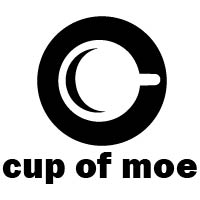We may earn money or products from the companies mentioned in this post.
1981 thriller “Wolfen,” directed by Michael Wadleigh, features an intriguing plot, solid effects, and an epic score from renowned composer James Horner. With a unique spin on the werewolf subgenre, “Wolfen” is an intelligent horror crime drama.
Retired NYPD Captain Dewey Wilson (Albert Finney) returns to assist on a case with a series of strange murders. Magnate Christopher Van der Veer (Max M. Brown), his wife Pauline (Anne Marie Pohtamo), and bodyguard are violently killed in Battery park. Though the private firm Executive Security where Van der Veer worked believes it’s the work of terrorists, Wilson disagrees. Van de Veer’s bodyguard, a Hatian with ties to voodoo, makes Wilson think otherwise.
During the investigation, Wilson works closely with crominal Psychologist Rebecca Neff (Diane Venora). Collaborating on the case, Neff and Wilson probe an abandoned church in the South Bronx. Neff ascends the church bell tower after seemingly hearing a baby crying. But Wilson, upon hearing what sounds like a wolf crying, proceeds to pull Neff away from the building.
Meanwhile, Coroner Whittington (Gregory Hines), finds non-human hairs on the victims. Zoologist Ferguson (Tom Noonan) states that these come from the Canius lupus, stating that while there are 40 subspecies, these hairs don’t belong to any of those. This leads Wilson to Eddie Holt (Edward James Olmos), a Native American who claims to be a shapeshifter.
1981 “Wolfen” bears several similarities to 1978 “The Manitou.” Like “The Manitou,” “Wolfen” delves into Native American lore, with supernatural murders. Additionally, both movies assume an investigatory format almost like a giallo film. The effects are top-notch, especially the wolves. In certain scenes, actual wolves were used. However, in others mechanical wolf puppets were utilized. The use of mechanical wolves allowed seamless shots of real wolves and puppets so as to not endanger the main cast. Levers and hydraulic tubes allowed the manipulation of the face and eyes of these puppets, making for lifelike expressions.
Similarly, the cinematography is exquisite. Notably, shots atop the Brooklyn Bridge provide a lush backdrop, while contributing to the industrial, grimy vibe of the overall film. Abandoned buildings and demolished ruins litter the South Bronx for what appears as a post-apocalyptic wasteland. Point of view (PoV) shots for the wolves add extra flair to the film. James Horner’s timpani-filled score adds a epic auditory landscape which complements the gorgeous onscreen visuals.
However, the narrative though mostly engaging, is a bit dry in spots. At times, “Wolfen” drags. Thankfully, acting remains excellent throughout. Wlison and Neff are enjoyable lead characters, though it’s Tom Noonan as the quirky zoologist Ferguson who steals almost every scene he’s in.
Ultimately, 1981 “Wolfen” succeeds as a fresh genre take based on its excellent effects, cinematography, score. The supernatural crime thriller fusion works marvelously, and technical elements compensate for its at times uneven pacing and plot.
This post may contain affiliate links. We are a participant in affiliate programs such as the Amazon Services LLC Associates Program, an affiliate advertising program designed to provide a means for us to earn fees by linking to Amazon.com and affiliated sites. However, all products are thoroughly tested and reviews are honest and unbiased.

